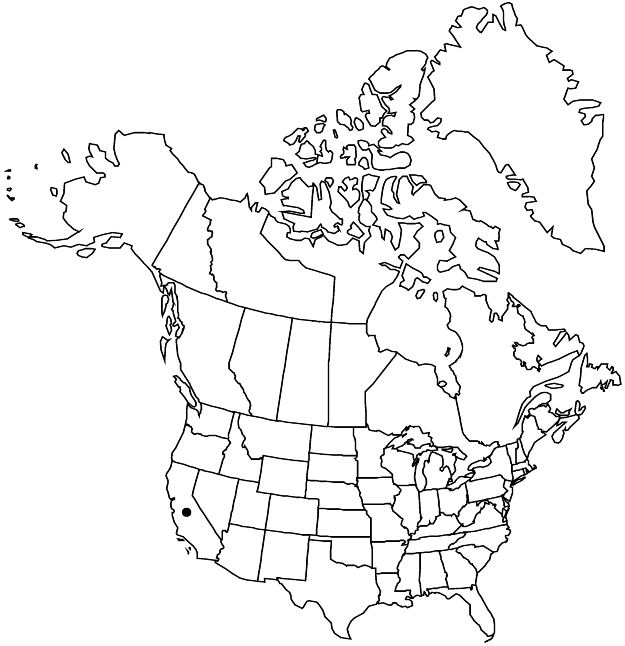Sidalcea gigantea
Madroño 56: 285, figs. 1 – 3. 2010.
Herbs, perennial, (0.8–) 2 (–2.5) m, not glaucous except on stems, usually in colonies, with rhizomes to 40–60 cm × (6–) 10 mm, glabrescent with reflexed-appressed bristle hairs 2.5 mm. Stems single, scattered, erect, usually purple tinted proximally, hollow especially towards base, pithy distally, 10–14 mm diam. just distal to base, often glaucous, proximally densely retrorsely bristly-hairy and stellate-hairy, hairs pustulate, 1.5–2.5 mm, distally sometimes glabrous. Leaves mostly cauline, basal usually absent; stipules deciduous, with pink band on stem at base, narrowly lanceolate, (3.5–) 5 (–8) × 0.7 (–1.5) mm; petioles of proximal leaves 6–8 cm, those of midstem leaves 10–14 cm, 2 times to as long as blade, apex curved with swollen portion or pulvinus 5–6 × 1.8 mm; blades of proximalmost cauline leaves rounded, shallowly, palmately 4-lobed or 5-lobed, 0.5–0.7 × 0.5–0.7 cm, lobe margins irregularly, sparsely dentate, apices rounded, midcauline blades 5–7-lobed, 6.5–12 × 10–13 cm, wider than long, gradually reduced distally, lobes straplike, divided 3/4 to base, lobes 5.5 × 1.5–1.8 cm, margins coarsely dentate, surfaces sparsely, minutely hispid and stellate-puberulent, distal leaves deeply 5-lobed, otherwise similar in shape, leaves immediately below inflorescence greatly reduced, irregularly 2-lobed or 3-lobed. Inflorescences erect, spiciform, open, calyces usually not overlapping, usually branched, branches 14–18 cm, each branch 10–20 flowered, not 1-sided, elongate, 5–20 cm; bracts 1, usually undivided, narrowly lanceolate, often 2-fid, 2.5 mm, equaling or slightly longer than pedicel, much shorter than calyx. Pedicels 2–3 (–5) mm; involucellar bractlets absent. Flowers bisexual or unisexual and pistillate, plants gynodioecious; calyx 5–6 mm, to 8 mm in fruit, uniformly, densely stellate-puberulent, surface obscured; petals pale-pink, pale-veined, pistillate 7–9 mm, bisexual (10–) 14–20 (–25) mm; staminal column 6–8 mm, stellate-puberulent; anthers white to cream or pale-yellow; stigmas (6) 7 or 8. Schizocarps 6–7 mm diam.; mericarps (6) 7 or 8, sides 3 mm, thick, back and margins thick, rounded, reticulate-veined, pitted, back with prominent groove, top sparsely glandular-stellate-puberulent, mucro 1 mm. Seeds 1.5 mm.
Phenology: Flowering Jul–Sep.
Habitat: Moist to wet, forested slopes, seeps, stream margins, meadows, coniferous forests
Elevation: (600–)900–1700 m
Discussion
Sidalcea gigantea is likely the tallest Sidalcea species; it can be distinguished also by its range (high Cascades and the northern high Sierra Nevada), retrorse hirsute stem bases, thick, hollow stems, and massive, hirsute rhizome systems. Most large patches appear to be clonal and generally produce either bisexual or unisexual, pistillate stems. Sidalcea gigantea is closely related to, and has been confused with, both S. asprella and S. celata. Its leaves are most like those of S. asprella in that they are usually similar in shape throughout the stem; the tall stems and massive rhizome systems distinguish it from S. asprella, as do its occurrence at higher elevations and its later flowering time.
Selected References
None.
Lower Taxa
No values specified."thick" is not a number.
